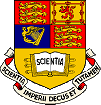|
|
| The
Imperial College Rosetta Project |
|
 |
| |
| The Rosetta Plasma Consortium (RPC) |
The RPC is a consortium of five sensors capable of complementary
measurements of the plasma environment around the comet.
The goal set by the RPC Science Team is to provide in-situ
investigations with complementary data necessary for an understanding
of the processes in the inner coma and their relationship
to the evolution of structures in the coma with the increase
in cometary activity.
|
Five sensors have been selected to achieve this aim:
|
The need for scientific and technical coordination as well
as spacecraft resources optimization has led to the formation
of the Rosetta Plasma Consortium (RPC).
The single Plasma Package Interface Unit, PIU, and the common
Electrical Ground Support equipment complement the RPC.
| The Scientific
Objectives |
Physical properties of the nucleus
- The RPC sensors will detect early activity of the
cometary nucleus. As soon as sublimation activity
starts, expected when the comet is a few AU from the
Sun, ion pickup of ionized neutrals will begin. The
direct detection of these ions will be possible, as
will the effect in terms of the increase of plasma
wave activity.
- Analysis of the electromagnetic activity in the
region surrounding the nucleus can give information
on the conductivity and any remanent magnetization
of the cometary nucleus itself.
|
Inner coma structure, dynamics and
aeronomy
- RPC will study photochemical reactions which change
parent atoms, molecules and ions into 'daughter' products.
- RPC measurements will determine the physical processes
controlling the mass flow, time evolution and plasma
structure of the inner coma and its interaction with
the solar wind, energetic ions and fields. Any inner
shock will be studied. This sets a framework within
which mass spectromatic and other microscopic studies
are made.
|
Onset and development of cometary
activity
- Study of bare nucleus at large heliospheric distances.
- Study of developing solar wind-comet interaction,
including the formation of plasma boundries.
|
Solar wind interaction
- Physics of the contact surface: its development,
structure and stability.
- Exploration of the inner cometary coma and cavity-tail
connection region.
- Development of boundries in the plasma near the
comet.
|
Formation and evolution of the plasma
tail
- Tail structures and tail ray formation region.
- Tail disconnection event studies.
|
This page was last updated September 2002.
|
|
|
